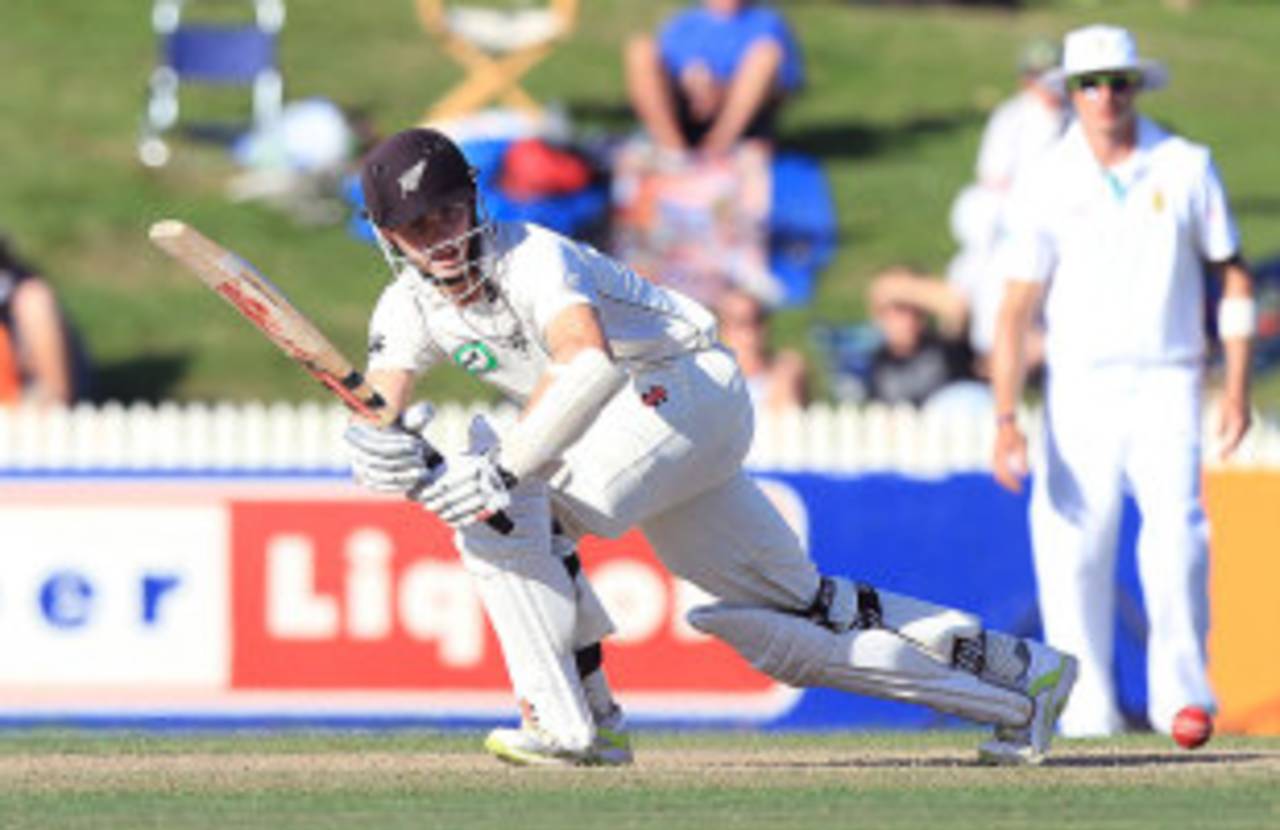Six lessons for New Zealand
Six lessons New Zealand learnt during the Test series against South Africa

Kane Williamson showed his best during the series • AFP
Kane Williamson's century to help New Zealand draw the third Test is perhaps the gutsiest, most inspirational knock by a New Zealander in years. Striding to the wicket at 1 for 2 to make your second Test ton and save a match is a tremendous achievement for anyone, let alone a 21-year-old in his 12th Test against arguably the most lethal four-prong pace attack in a generation. With Williamson-esque application New Zealand Test cricket will survive. Yes, it 'only' earned a draw but it was the embodiment of grit as he let the blood-coloured face of his bat do the talking. Dunny-door forward defence was mixed with calculated leaves that showed he had a GPS-like knowledge of his off stump's location. Williamson becomes just the seventh New Zealander to score a second-innings century in the past decade and just the second to do so against South Africa (John Reid did it in 1961-62).
Williamson's effort was one thing but South Africa treated New Zealand to a lesson in application across the series. They adapted better to batting time rather than demonstrating flair. Of the 56 innings played by New Zealanders in the first two Tests, 20 (36%) finished with scores between 20 and 50. The visitors had 18 of 46 scores (39%) fall in the 20-50 bracket. The difference is at least one or more South Africans generally continued to a substantial score. The South Africans made five centuries and seven half-centuries; New Zealand could only produce one century and four half-centuries.
The efforts of the New Zealanders must be seen as meritorious against a side which has ambitions to be the best in the world by mid-year. In the first two Tests they had South Africa dismissed for 238 and 253 in the first innings before the visitors piled on 474 runs to start at the Basin Reserve. Fans learnt Mark Gillespie has still got what it takes at Test level with five- and six-wicket bags, combined with the guile of Chris Martin and the tenacity of Doug Bracewell (even if he struggled in the last two Tests). Trent Boult could consider himself unlucky to get the chop after one relatively redundant Test in Dunedin but, with Neil Wagner eligible for the West Indies tour and the likes of Tim Southee and Mitchell McClenaghan in the wings, there is competition.
Provided New Zealand Cricket can rubberstamp the flight budget there might be value employing more Test specialists and keeping players refreshed by cutting down workloads. Martin and Gillespie have been good examples in the home Tests while arguments can be made for Bracewell, Southee, Boult, BJ Watling, Kruger van Wyk, Dean Brownlie and Daniel Flynn to stick with Tests. Many players will otherwise experience non-stop touring until next February after the South African series. April-May's IPL is followed by tours to the West Indies, India, Sri Lanka and South Africa before New Zealand returns home to play England.
Contrary to some schools of thought, New Zealand can far from afford to drop Daniel Vettori. Vettori equalled Stephen Fleming's record for Tests (111) in the final match - anyone with that record over 15 years would need significant justification for dismissal when the team struggles against top opposition. Vettori's batting form as a makeshift No 6 was mediocre with 97 runs at 19.40 (career average 30.31) but his wicket-taking is of more concern with three wickets at 95.00 over the series (career average 34.16), albeit going at just 2.44 an over. However, Vettori deserves a chance at redemption after a rare blip in an otherwise exemplary career.
After getting a late call-up to his Test debut in Dunedin for the injured Watling, van Wyk looked at home in the Test arena, taking eight catches and conceding just nine byes in 484 overs of cricket. His skills on both sides of the wicket have been welcome, as has his general vim in the field. Gutsy batting - 123 runs at 24.60 including a 100-minute, 39-run vigil which helped New Zealand draw the final Test in Wellington - has placed further pressure on Watling to regain his spot when he returns from his hip injury.
Andrew Alderson is cricket writer at New Zealand's Herald on Sunday